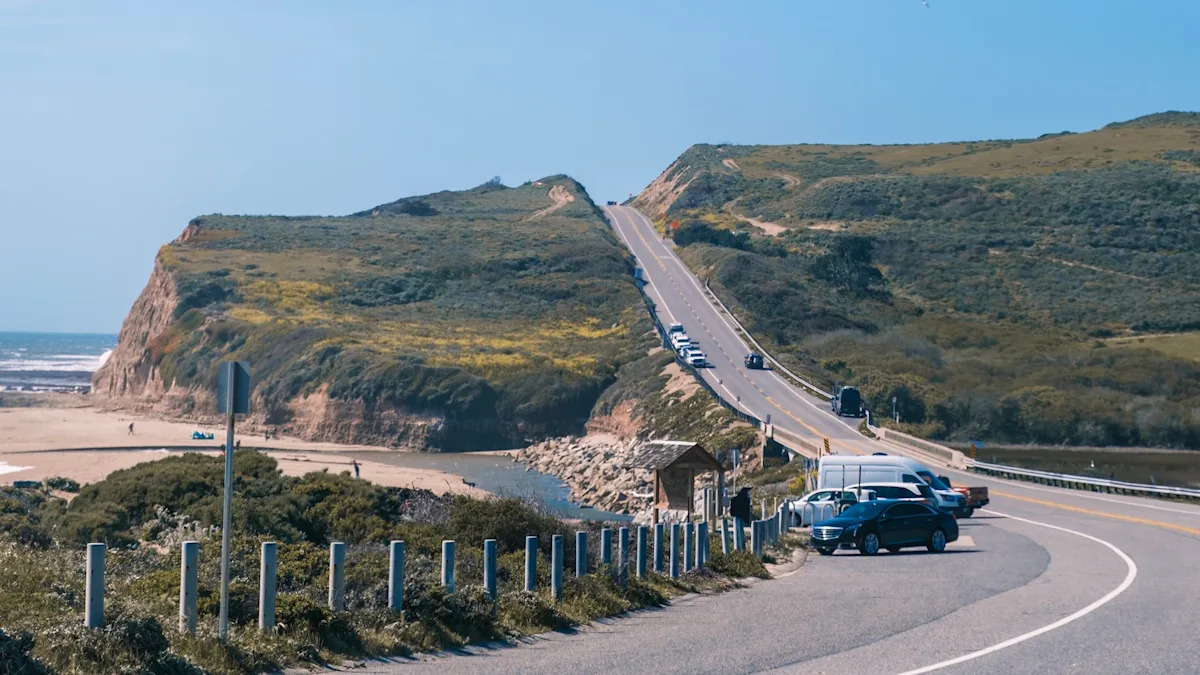Rising sea levels are a major concern for many coastal communities, with widespread risks that can extend across vast regions and entire states.
One example of an at-risk area is Pescadero, a small farming community on the California coast.
What’s happening?
In Part 3 of a series on sea level rise from Bay Area-based public radio station KALW, an emergency and disaster preparedness reporter looked at how flooding is affecting an unincorporated town in San Mateo County.
Although Pescadero’s residents have been dealing with flooding for decades, as the mid-July audio episode demonstrates, the issue is worsening and highlighting disturbing socioeconomic divides.
The town is situated on a floodplain, making its residents and businesses especially vulnerable. Home to large immigrant and agricultural communities, these populations can be disproportionately impacted.
“Last January, the water was so high that I had to use rain boots to walk around in my kitchen,” flower farmer Maria Juana Zavala Rizo shared. “I prepared dinner with my boots.”
Reporter Wren Farrell took a tour of the area with nonprofit leader Irma Rodriguez Mitton, whose organization is involved with community responses to climate change. Together, they observed some homes being raised off the ground to prevent future flooding.
“If you’re a property owner with means and you can raise your home. That’s great. That’s one home raised out of the floodplain,” Rodriguez Mitton told KALW. “But the community isn’t raised out of the floodplain.”
Why is this concerning?
Marginalized communities can be disproportionately impacted by flooding and other extreme weather events.
As flooding increases in frequency and intensity due to rising global temperatures, these communities can be repeatedly hit with dangerous conditions, life-changing home damage, and financial hardship. Dealing with these persistent worries can also take a toll on residents’ mental well-being.
With great emotion, farmer Zavala told KALW that river waters had “entered [her] home during the rainy season for the past 28 years.” She attended a Board of Supervisors meeting in 2023 to tell local officials about the ongoing challenges, which have included disruptions to road access and emergency response times.
“Since that meeting,” the public radio station reported, Zavala’s landlord “installed cinder block walls in the lower parts of the home to keep the water out.” Her house doesn’t flood anymore.
What’s being done to protect towns from flooding?
In California, the Resource Conservation District is working with property owners to facilitate floodplain restoration and sediment management, according to KALW. Coordinated efforts are underway across multiple agencies to prepare for droughts, heavy storms, and rising sea levels.
Meanwhile, innovators have been developing the concept of “sponge cities” to absorb rainwater with parks, gardens, and other natural infrastructure. These techniques are already being implemented in cities like Los Angeles and Pittsburgh to mitigate urban flood risks.
Individuals can enhance their personal storm resilience by taking steps to disaster-proof their homes and generate grid-independent power from cleaner energy sources.
Installing solar panels with backup battery storage can help homeowners withstand grid outages caused by extreme weather. When prospective customers compare installer quotes using EnergySage’s free online tool, they can save up to $10,000 on the upfront costs of going solar — reducing, in the process, the heat-trapping gases that can drive rising global temperatures and exacerbate floods.
Meanwhile, as the recent storytelling from Pescadero residents makes clear, officials and advocates must collaborate to ensure that not only homeowners but property owners in general are supported in taking local actions that protect all residents. That means landlords too must be expected to deploy effective solutions equitably.
Join our free newsletter for good news and useful tips, and don’t miss this cool list of easy ways to help yourself while helping the planet.

